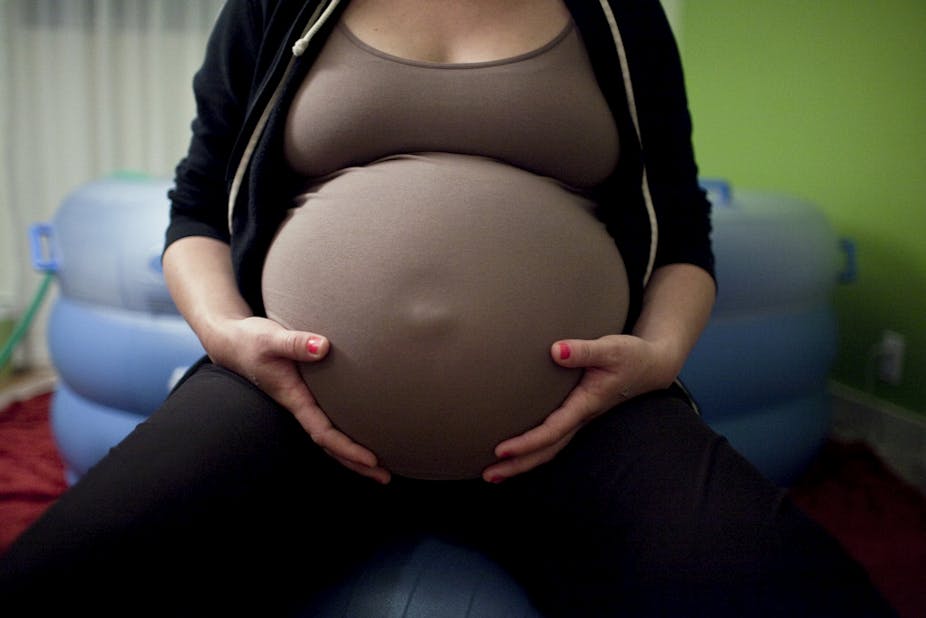The recall of hired home-birthing pools after a baby contracted Legionnaires’ disease will inevitably lead some women to worry about having a water birth at home. While the incidence is rare, it is worth keeping in mind some clear guidelines about how to best use a water pool.
Home birth is an option for women who are at low risk of complications, but it is certainly not widespread. In the UK, the percentage of women who have their baby at home is very low – only 2.3% in 2012 (included in this figure are many home births that are unplanned). Others who plan home births initially labour at home using water, but then transfer to hospital for additional pain relief.
But about half of women who planned home births use water birth pools, as immersion in water helps relieve pain.
In the case of the baby with Legionnaires’, it was born in a pool that was pre-filled and kept heated for several days before. The recommended water temperature for water birth pools is 36-37°C so that during labour the baby is not overheated or shocked by cold water. But this is also an ideal temperature for many bacteria to flourish in, including the Legionnelle bacteria, which cause a severe lung infection. So the recommendation is that home birth pools should never be pre-filled and kept warm. This is the reason that hot tubs that aren’t cleaned and looked after have also been implicated in cases of Legionnaires’ disease.
Some women may be tempted to pre-fill the pool when they know they could go into labour so that they don’t have to wait while it fills up when labour starts, or to try it out beforehand. But a good idea is to fill it with cold water to see how long it takes to fill – most only take 10-20 minutes – before emptying, cleaning and drying the pool until it’s actually needed, which will also give you an idea of when to start the process. This would prevent the unusual Legionnaire bacteria but also more common bacteria.
Hiring a pool
Not all women buy pools because they are for a one-off use or because buying one may be too expensive. Some NHS Trusts provide a rigid shell and women can then purchase a disposable liner, although many are hired privately. These hired pools come in a variety of types, usually free standing, and can have inflatable or rigid frames with disposable liners. Most come with pumps and pipes to aid filling and draining and most companies provide advice about safety and hygiene which should be read and adhered to. Even so, it’s ideal to discuss the pool, how and when to fill it and ensure it’s clean and safe with a midwife.
While an investigation into how the baby contracted Legionnaires’ is carried out, certain types of birthing pool have been banned by the NHS and Public Health England (PHE) until further notice. Heated pools from the particular supplier in this case have been recalled and a further six companies that hire out pools are being questioned over whether they carry out the right risk assessments.
Concerns about infection are not new. But a Cochrane review I lead that looked at the evidence to date showed no difference in the incidence of infection in mothers or babies using a variety of pools, both plumbed in and free-standing. Importantly, however, all were filled at the time of use, were carefully maintained, with strict cleaning regimes, or with one time use only liners.
The concept of a pool that is pre-filled and kept warm is a new phenomenon but not one that is recommended in any NHS facility. The risk of infection is well recognised and all NHS facilities have policies and processes that include birth pools being filled at the time they are needed, are thoroughly cleaned and dried after every use and monitored for potential infections. Most good companies would recommend similar precautions.
All midwives are also very aware of the risk of infection and any woman considering birth at home or using water during birth should speak to her midwife about her plans. Advice in local waterbirth workshops for expectant parents also now explicitly includes not using pre-filled/heated pools because of the rare but possible infection risk.
There are important advantages for women giving birth at home, such as a sense of well-being from being in their own environment. The use of water during labour and birth is likely to be a contributing factor to this, so it is vital that women have all the information they need to safely birth at home and use water immersion during labour if they wish.
So the key message must be that any infection is unusual – and legionnaires extremely rare – but good practice when it comes to birthing pools, and under the guidance of a midwife, will contribute to a positive birth experience for all.

